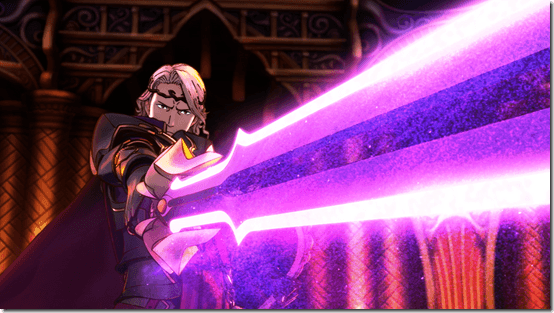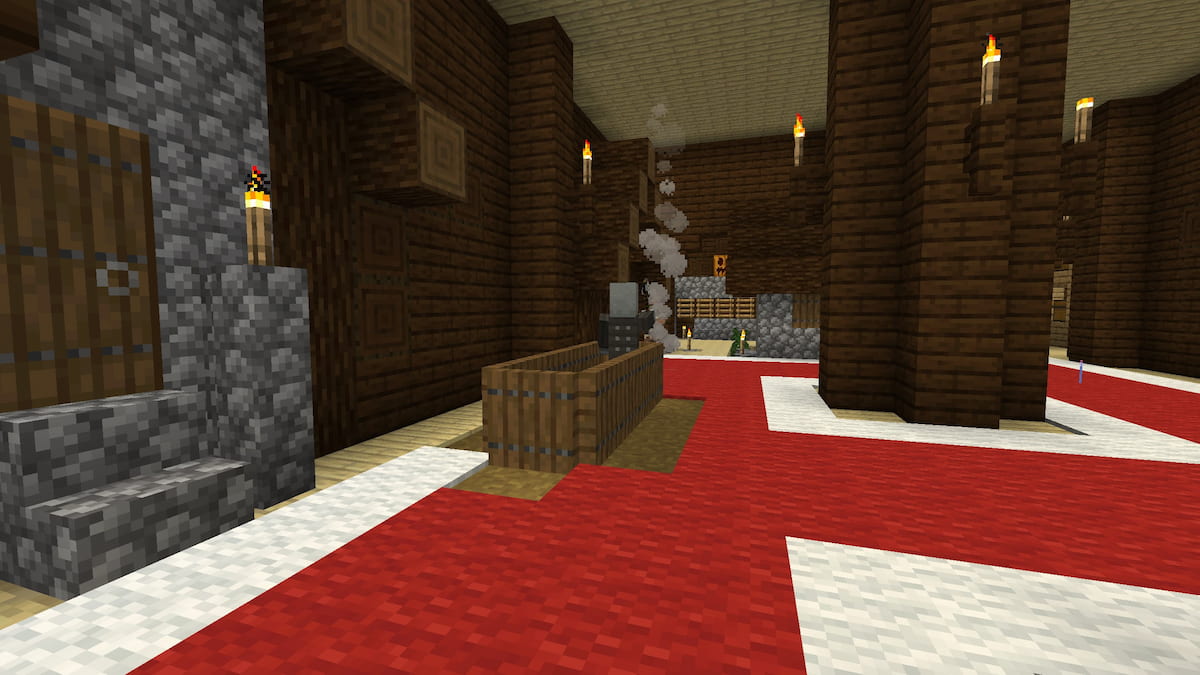Fire Emblem: Fates is finally here, and what a long road it has been! While veterans of the game may be excited to jump in without a second thought, there have been quite a number of changes to Fire Emblem‘s core mechanics that will make all your age-old strategies somewhat outdated. The reason? Well, to put it bluntly: Hoshido and Nohr don’t like playing with old gameplay mechanics.
But fear not! We are here to teach newbies and veterans alike about the mechanics you can come to expect from Fates. Now, let’s dive in and look at some basic strategy and tips!
Taking advantage of the map
In Fire Emblem, map control is key, and the best way to do this is to know the map. Depending on the map, various terrain setups can become an asset or a liability. In a forest or jungle map, for example, placing units in Trees or Jungles can increase their evasion by 10 points. Other terrain tiles can provide other benefits such as increased defense, as well as heal units by 20% at the start of your next turn.
Players should also make note that only certain units can walk on some tiles. For example, flying units are the only ones that are capable of crossing over chasms, cliffs, and travel straight over higher ground.
Another important note is that anything you can do, your enemy can as well. To make sure any vulnerable units are safe, press X to reveal where the enemy’s current range is. If a unit is in the pink area, the unit in that area is vulnerable to enemy attack during the enemy phase.
The Revamped Weapons Triangle

While anyone can pick a unit with the A button and throw them at the enemy, it takes a bit of basic strategy to know which units to put where, especially on harder difficulty settings.
In the classic Fire Emblem games, players had the basic Weapons Triangle (Sword > Axe > Lance > Sword), and the Trinity of Magic (Anima > Light > Dark > Anima). Players who have only played Fire Emblem: Awakening will not know about the Magic Triangle, but the Weapons Triangle is still a familiar concept. It essentially works like medieval Rock, Paper, Scissors, and doesn’t take much time to grasp.
Meanwhile in Fire Emblem: Fates…
While the Trinity of Magic hasn’t returned in Fates, the typically neutral weapons (Bow, Magic, and Knives/Hidden Weapons) are now included as part of the overarching Weapons Triangle. This was done to ensure that magic wouldn’t have nearly as much of a straight advantage as it did in Fire Emblem: Awakening. Similarly, the virtually useless weapon (bow and arrow) has been added to the triangle to ensure that it still has its uses outside of the rare narrow passage in Fire Emblem: Fates.
As such, the original triangle now looks like this:

Bows and Axes beat Lances and Knives, Lances and Knives beat Swords and Magic, and Swords and Magic beat Axes and Bows. Fire Emblem: Fates is even kind enough to give you the Rock, Paper, Scissors analogy in game!
It should be noted that some weapons aren’t included in this triangle. As such, the weapons now have colored backgrounds to help determine which weapon beats which. An easy way to remember them is: red beats green, green beats blue, blue beats red. Alternatively, just think about the fire-grass-water triangle.
The math behind the strategy…
In Fire Emblem: Fates, the calculations behind the Weapons Triangle are as follows:
Advantage
- +5% hit if your Weapon Rank is E/D
- +10% hit if your Weapon Rank is C/B
- +1 damage and 15% hit if your Weapon Rank is A
Disadvantage
- -5% hit if enemy Weapon Rank is E/D
- -10% hit if enemy Weapon Rank is C/B/A
- -1 damage and 15% hit if enemy Weapon Rank is A
While this doesn’t seem like much, in harder difficulty settings this can mean life or death for your units. For example, if your E ranked Swordsman attacks an A rank Lance-wielder, the resulting math will be as follows:
Your Swordsman: -1 damage and -15% hit rate
Enemy Lance-wielder: +1 damage and +15% hit rate
To simplify, just remember that the person with the advantage determines the advantage and disadvantage rates. Sounds simple enough, right?
Wrong.
The Reverse-Triangle Weapons
Ever since Fire Emblem: The Binding Blade on the Game Boy Advance, Fire Emblem games have included a set of three weapons known as the “Reaver” weapons. These include Swordreaver, Lancereaver, and Axereaver.
While their names aren’t particularly inventive, these weapons reverse the traditional weapons triangle and provide double the bonuses that you would typically get from it. However, this doubled bonus also works in reverse. This means that if you are attacked by an axe while wielding Lancereaver, you are in for a bad time.
But wait, there’s more!

It should be noted that some unit types are weak against certain weapons. The most commonly known weakness is that of flying units – such as Pegasus/Sky Knights or Wyvern Riders/Revenant Knights (above). If ever a flying unit is faced off with a bowman, more often than not the flying unit will be taken down in one hit, even when they are a much higher level than the bowman.

Each weapon will have an icon beside the name (as seen above) that will tell the player which type of unit it is effective against. In this case, the weapon – a bow – is effective on flying units. Other symbols include:
- A knight’s helmet which does extra damage to armored units
- A red dragon’s head which does extra damage to dragons
- A green wyvern’s head which does extra damage to wyverns
By checking your enemy’s inventory you can ensure that any of your units who are at risk of taking extra damage are safely out of range. To do this, press the X button (as explained before) to see the enemy’s advanceable area, and simply keep any vulnerable units outside this range. Alternatively, you can press the A button on single units to highlight an area in red which will warn you where that particular unit can attack.
Pair up!
If you are a newbie or a veteran of the Fire Emblem series returning to the game for the first time since the Nintendo DS title, Shadow Dragon, this will be a foreign concept to you.
Pairing up was originally introduced in Fire Emblem: Awakening, and allows players to… well… pair up two units. While paired up, the units function as one super unit. This allows one character – namely the one in “front” – to attack while gaining various buffs from their partner. Fire Emblem: Fates, the mechanic has been changed for balance reasons. In its place are two separate “stances.”
Attack Stance
The first stance in Fire Emblem: Fates is known as “Attack Stance.” When two allied units are standing beside one another, the two units will enter combat together. While in Attack Stance both units will always attack, no matter what their support level is. However, unlike in Awakening, the supporting unit can only attack once unless equipped with a weapon from the “Brave” series. The supporting unit’s attack will also be blocked without fail by an enemy in “Guard Stance.”
Guard Stance
Guard Stance works in a similar way to pairing up in Awakening. While it is still known as “Pair Up” in the international release, it has a number of differences:
- The main unit only gains a stat boost if they have a support level with that character.
- While in Guard Stance the attacks of Attack Stance enemy units will always be blocked.
- The block chance is the same regardless of support rank.
- Every unsuccessful block roll will increase the Guard Stance gauge by 2 points. Once it reaches 10 the next attack will always be blocked.
- The supporting unit in a Guard Stance pair up cannot attack.
It should also be noted that the enemy army can use both Attack Stance and Guard Stance. These changes to the Pair Up system make Fire Emblem: Fates a lot more difficult than its predecessor. However, with careful planning players can ensure the survival of their entire army.
Now that’s strategy!
By following these simple tips, any player can survive the bulk of the battles to come. If you want to learn more advanced techniques, check out my other guides!
- Advanced Strategy and Tips
- Support, Marriage, and Children
- Boons, Banes, and Talents
- Weapons and Smithing
As always, have fun with Fire Emblem: Fates, and I’ll see you on the battlefield!













Published: Feb 12, 2016 06:58 am